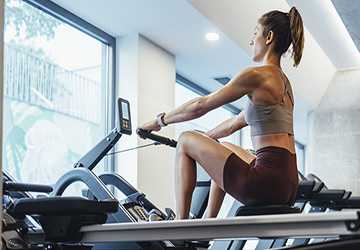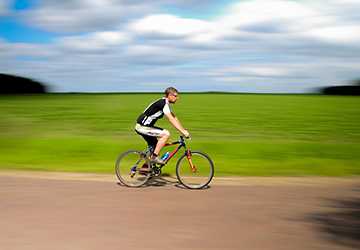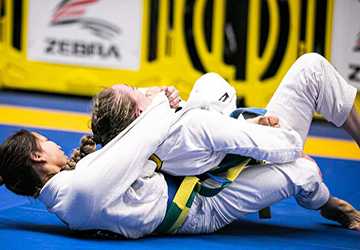How to Boost Your Rowing Speed and Stamina
Rowing is an incredible full-body workout that builds strength and improves cardiovascular fitness. Whether you're a seasoned rower or just starting, there are ways to boost your rowing speed and stamina. In this article, we'll break down ten essential tips to help you glide through the water with more power and endurance.
Perfect Your Technique
First, it's crucial to nail down the correct rowing technique. Proper form ensures you're using your muscles efficiently and reduces the risk of injury. Start by sitting tall, engaging your core, and gripping the handle with an overhand grip. Push with your legs, lean back, and pull the handle to your lower chest. Reverse this motion when returning to the starting position.
When practicing your technique, focus on the smoothness of your strokes. Aim for a fluid motion that minimizes jerky movements. This conserves energy and allows for a more efficient power transfer from your muscles to the oars, boosting your speed and stamina.

Set Realistic Goals
Setting achievable goals is essential for progress. Whether it's increasing your rowing time, distance, or speed, having clear targets keeps you motivated. Start small and gradually build up your goals over time. Celebrate your achievements, no matter how minor they may seem, as they are stepping stones to your ultimate success.
Break your long-term objectives into smaller, manageable milestones to make goal-setting more effective. This way, you can track your progress more closely and stay motivated as you reach each mini-goal.
Mix Up Your Workouts
Variety is the spice of life, and the same goes for rowing. Stay calm in a monotonous routine; mix up your workouts. Incorporate interval training to increase your speed. Alternate between short bursts of high-intensity rowing and longer, steady-paced sessions to boost your stamina. This variety prevents boredom and challenges your body in different ways.
Consider adding some cross-training to your regimen as well. Swimming, cycling, or hiking can complement your rowing workouts, improving overall fitness and preventing burnout.
Focus on Strength Training
Rowing is more than just rowing. It would help to strengthen your muscles during the rowing motion to enhance your performance. Concentrate on exercises that target your legs, back, and core. Squats, deadlifts, and planks are excellent choices. A stronger foundation will help you generate more power during each stroke.
Remember to progressively increase the weight or resistance in your strength training exercises. Gradual progression ensures that your muscles continue to adapt and grow stronger, directly impacting your rowing performance.
Pay Attention to Your Breathing
Your breath plays a vital role in rowing. Coordinate your breath with your strokes to maintain a steady rhythm. Inhale as you return to the starting position and exhale as you push away. Deep, controlled breathing enhances your stamina and helps you stay focused throughout your rowing sessions.
Practice diaphragmatic breathing, which involves using your diaphragm to breathe deeply rather than shallow chest breathing. This type of breathing provides more oxygen to your muscles and helps reduce stress and anxiety during intense rowing sessions.
Improve Your Flexibility
Flexibility is often overlooked in rowing, but it's crucial for proper form and injury prevention. Incorporate stretching into your routine to increase your range of motion. Focus on your shoulders, back, and hip flexors. A flexible body moves more efficiently and allows you to maximize your stroke length.
Consider incorporating dynamic stretching into your warm-up routine before rowing. Dynamic stretches help improve mobility and prepare your muscles for the rowing motion.

Monitor Your Progress
Tracking your progress is essential to know where you stand and where you want to go. Record your workouts, noting the distance, time, and speed. There are many apps and fitness trackers available that can help you do this. Regularly reviewing your progress will keep you motivated and help you identify areas that need improvement.
Consider using a heart rate monitor to gauge your effort during rowing sessions. Monitoring your heart rate can help you maintain the right intensity for different workouts, whether you're focusing on speed or endurance.
Fuel Your Body Properly
Your body needs the right fuel to perform at its best. Prioritize a balanced diet rich in carbohydrates, protein, and healthy fats. Carbs provide the energy you need for those intense rowing sessions, while protein supports muscle recovery and growth. Stay hydrated before, during, and after your workouts to prevent fatigue.
To optimize your energy levels, consume a carbohydrate-rich snack or meal about two hours before rowing. This ensures your body has sufficient glycogen stores to sustain your efforts throughout the workout.
Rest and Recovery
Remember to consider the importance of rest and recovery. Overtraining can lead to burnout and injuries. Make sure to incorporate rest days into your routine to allow your muscles to heal and grow stronger. Use this time for light activities, stretching, or meditation to keep your body and mind in shape.
During rest days, focus on activities that promote relaxation and muscle recovery, such as foam rolling or yoga. These practices can help alleviate muscle soreness and prevent overuse injuries.
Seek Professional Guidance
If you're serious about improving your rowing speed and stamina, consider seeking guidance from a professional coach. They can provide personalized training plans, correct your form, and offer valuable insights to help you reach your goals faster. Even a few sessions with a coach can make a significant difference in your rowing performance.
Coaches can also help you identify weaknesses in your rowing technique that you might need to know. Their expert guidance can lead to more efficient strokes and better overall performance on the water.
Conclusion
Boosting your rowing speed and stamina is a journey that requires dedication and patience. You can make significant strides in your rowing performance by perfecting your technique, setting realistic goals, varying your workouts, and taking care of your body through strength training, flexibility, and proper nutrition.




















